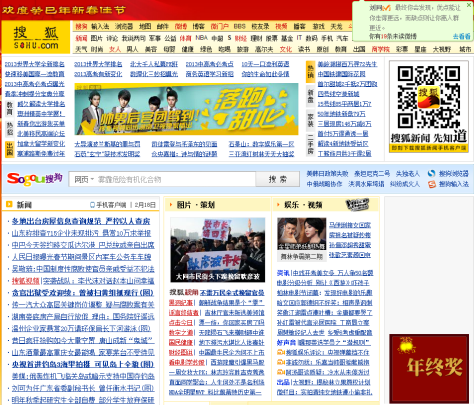However, I’ve found that many UX designers adhere to this idea regardless of context, so take a minimalistic approach even when additional screen elements and content would result in a better user experience.
Simplicity is not that simple.
Let’s take a step back and think about what we want to achieve through simplicity in the first place: reducing users’ mental effort, supporting users’ tasks, creating user engagement, and enhancing discoverability. In actuality, given these goals, a complex user interface comprising many elements, if designed well, can achieve our goals as well as, if not better than a simplistic design.
A Busy-Looking Site That Makes Users’ Lives Easier
A very popular Web portal in China is Sohu.com, which is equivalent to Yahoo.com there. As you can see in Figure 1, this site looks very busy. It has high information density, long pages; and lots of ads, graphics, links, and text.

But take a close look, and you’ll see that the site manages its complexity by
- using color to distinguish different types of information
- grouping content according to categories
- maintaining consistency in page layout and the use of color throughout the site—for example, there’s always a picture in the upper-left corner of each content container.
When I read information on Sohu.com—I know Chinese well—it’s an effortless experience. I can always find my way around the site and have no difficulty discovering its content. The content is newsworthy and entertaining, and I don’t run out of interesting content even after hours of reading on the site. In my view, that’s the true definition of simplicity.
To summarize, there is face-value simplicity, which is characterized by a clean look and feel, and there is true simplicity, which is characterized by ease of use, ease of comprehension, good discoverability, and minimal mental effort. Does face-value simplicity lead to true simplicity? Sometimes, as in the case of a smartphone user interface, but not always.
True simplicity is about making users’ lives easier, not about making a user interface look simple.
